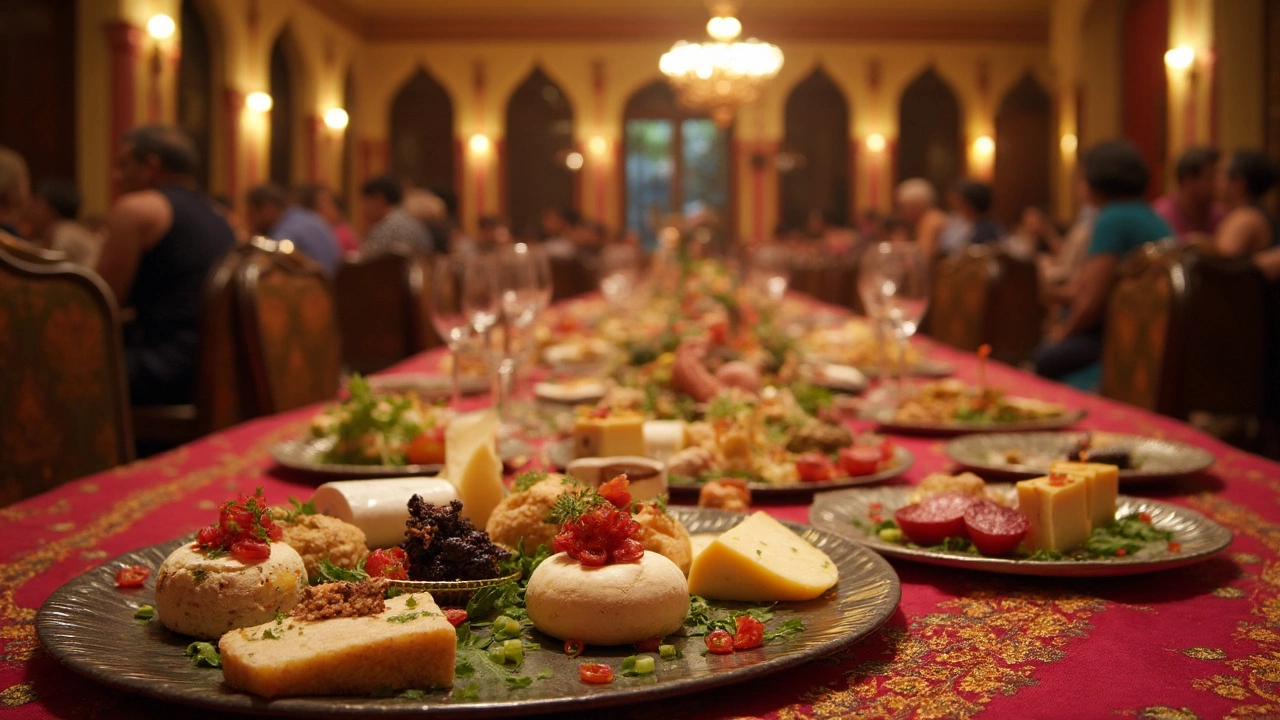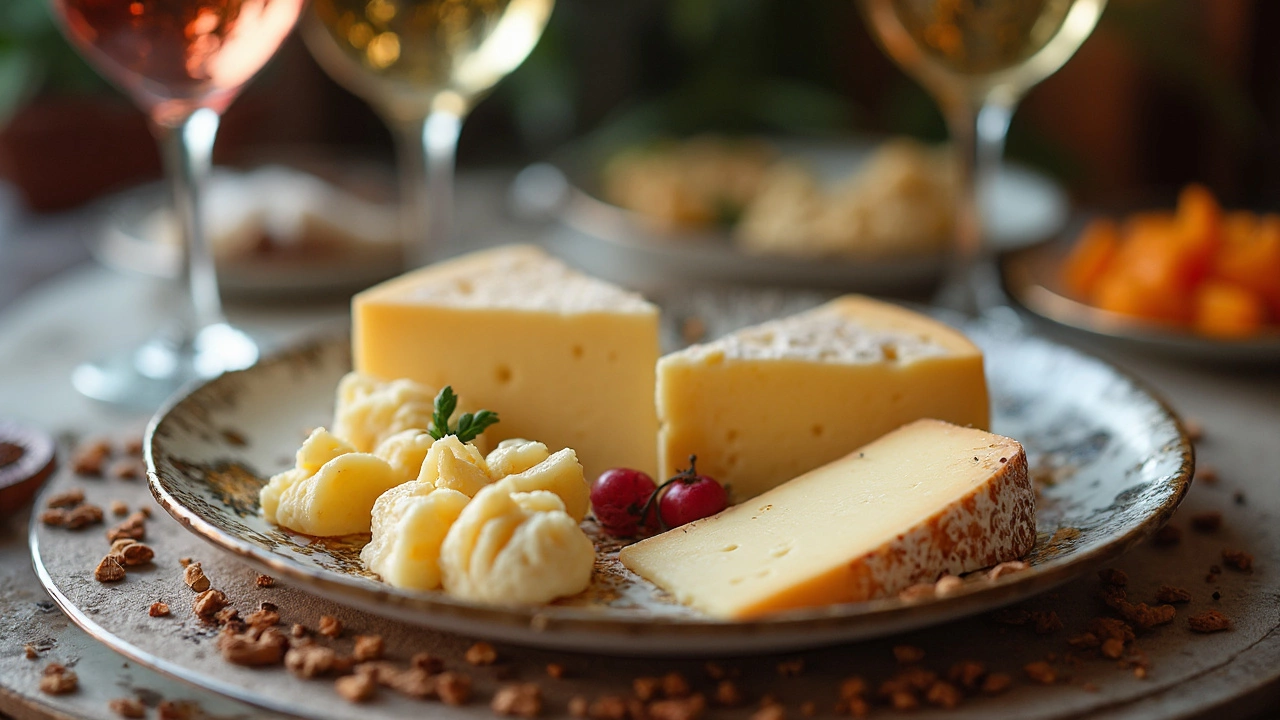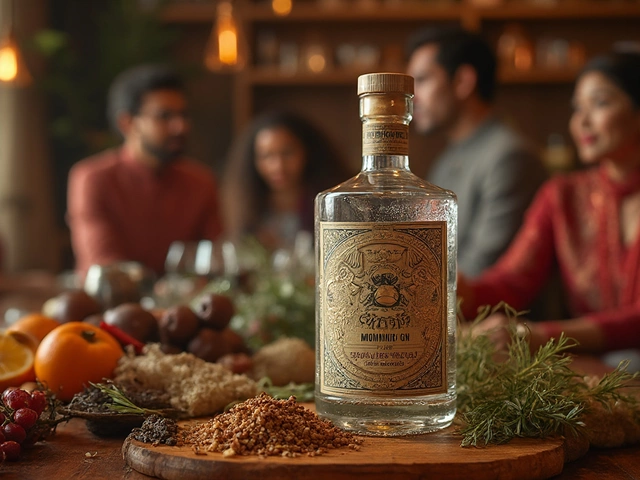
Wine and cheese—two things that just scream sophistication, right? But let's clear up a common conundrum: should this pairing happen before or after dinner? Both options have their perks. As a starter, wine and cheese can whet your appetite. Imagine kicking off an evening with a light, citrusy white wine paired with creamy brie. Perfect to get those taste buds tingling.
On the flip side, a post-dinner wine and cheese board often feels like the ultimate indulgence. Dark, rich reds complementing aged cheddar can be the cherry on top of a delicious meal. Traditionally, many cultures opt for this to wind down the evening perfectly. We see it in French dining—who can resist that?
Wine and Cheese as a Starter
Kicking off your evening with a delightful mix of wine and cheese can set the perfect tone. It's all about balancing flavors, so you don't overwhelm your palate before the main course. Here's why opting for wine and cheese as a starter could be your new favorite ritual.
Firstly, lighter wines like Sauvignon Blanc or Pinot Grigio pair wonderfully with soft cheeses such as goat cheese or camembert. The acidity in the wine cuts through the creaminess of the cheese, balancing flavors beautifully. This kind of pairing gets your taste buds ready without stealing the spotlight from the main meal.
Another thing to consider is the element of social interaction. Serving wine and cheese encourages conversation and sets a relaxed, welcoming atmosphere. It's an opportunity for guests to mingle before sitting down for dinner.
But proceed carefully! A full-bodied wine and robust cheese can dominate lighter dishes if you're not careful. So, if the meal is on the delicate side, stick to lighter wines and cheeses. On the flip side, if roasted meats or hearty dishes are coming later, feel free to experiment with more aggressive flavors upfront.
- Tip: Try a cheese from the same region as the wine. Regional harmony often works like magic.
- For a refreshing start, consider a glass of Prosecco paired with an Italian asiago.
Remember, the goal is to enhance the dining experience, not to overshadow it. Happy pairing!
The Dessert Cheese Board
So why go for a wine and cheese pairing as a dessert? Mainly because it offers an array of flavors that can wrap up your meal quite nicely. Typically, after a hearty main course, a selection of cheeses can complement your evening without feeling too heavy. Plus, it feels a bit fancy, don’t you think?
For those considering this option, here are a few classic combinations to get you started. A couple of popular choices include pairing a sharp blue cheese with a sweet port, or perhaps trying a fresh goat cheese with a chilled white wine like Sauvignon Blanc—a match made in flavor heaven.
If you're curious about what makes this combo so appealing, it's all about contrast and balance. The richness of the cheese can mellow out the strong flavors of the wine, and vice versa. Sweet wines meet their perfect partners in salty, tangy cheeses.
- Blue Cheese and Port
- Brie and Champagne
- Aged Gouda and Cabernet Sauvignon
- Goat Cheese and Sauvignon Blanc
Plus, let’s not forget the extras. Many people love adding nuts, honey, or even a fresh fruit compote to their cheese board to give it that extra something special. These little touches can enhance the overall taste experience.
And let’s talk about presentation. A well-plated cheese board can double as a conversation starter. Imagine this: a wooden board decked out with various cheeses, a few crackers, some dried fruits, and maybe a handful of nuts—easy to assemble, but looks oh-so enticing.

Cultural Influences
When it comes to enjoying wine and cheese, culture plays a big role in when and how they're served. Let's take a closer look at some of these traditions.
In France, for instance, cheese is often served after the main course but before dessert. The French believe this order maximizes flavors, allowing you to savor the taste of the cheese without food overshadowing it. Plus, red wine, commonly paired with cheese, serves as a digestive aid, prompting a relaxed end to your meal.
Over in Italy, the tradition shifts a bit. Many Italians enjoy a glass of sparkling wine with mild cheeses like mozzarella before the meal begins. This pairing not only livens up conversations but also sets a festive tone for the dining experience.
Across the pond in the United States, things can vary. Hosting an appetizer course with assorted cheeses and a chilled Chardonnay is common for social gatherings. However, growing trends see cheese and wine served as part of a dessert course, with sweet wines balancing out sharp cheeses.
Let's look at some specific pairings enjoyed across cultures:
- France: Roquefort and Sauternes
- Italy: Gorgonzola and Barolo
- Spain: Manchego and Rioja
Understanding these cultural quirks can deepen your appreciation and enjoyment of wine and cheese pairing, and you can impress guests with your culinary knowledge!
Pairing Tips
Nailing the perfect wine and cheese combo doesn't need a sommelier's expertise, but a few handy tips go a long way. Let's dig into some basic pairing principles to make your experience delightful whether enjoyed before or after dinner.
First up, think about weight. Pair light-bodied wines, like a crisp Sauvignon Blanc, with lighter cheeses such as goat cheese. It’s all about balance; imagine trying to enjoy a feather with a rock. Heavy cheese needs a bold wine. An aged gouda makes a great match with a full-bodied Cabernet Sauvignon.
Next, consider the flavor intensity. Generally, it's wise to pair stronger cheeses with wines that can hold their own too. For instance, Roquefort finds a friend in sweet wines like Sauternes. When the flavors meet, they won't overpower each other. That's harmony.
Also, do not overlook acidity and tannins. Tannic reds like Syrah work wonders with firm cheeses, while high acidity white wines cleanse the palate between funky bites of blue cheese. It's like a foxtrot on your tongue.
- Soft Cheese: Think brie with a sparkling wine.
- Hard Cheese: Pair cheddar with a robust red.
- Blue Cheese: Goes great with a sweet dessert wine.
- Washed-rind Cheese: Try with a fruity white.
Don't hesitate to mix regional wines and cheeses. French wine with French cheese? Classic! If you choose Italian Pecorino, look for an Italian wine like Chianti.
| Cheese | Wine | Notes |
|---|---|---|
| Camembert | Chardonnay | Creamy meets buttery. |
| Manchego | Tempranillo | Spanish classics together. |
| Feta | Sauvignon Blanc | Acidic pairing perfection. |
Finally, trust your taste buds. These are guidelines, not hard rules. If you love Merlot with mozzarella, why not? Ultimately, your comfort is key. So whether it’s before dinner appetizers or an after-dinner delight, grab that wine and cheese and enjoy the ride.





Categories